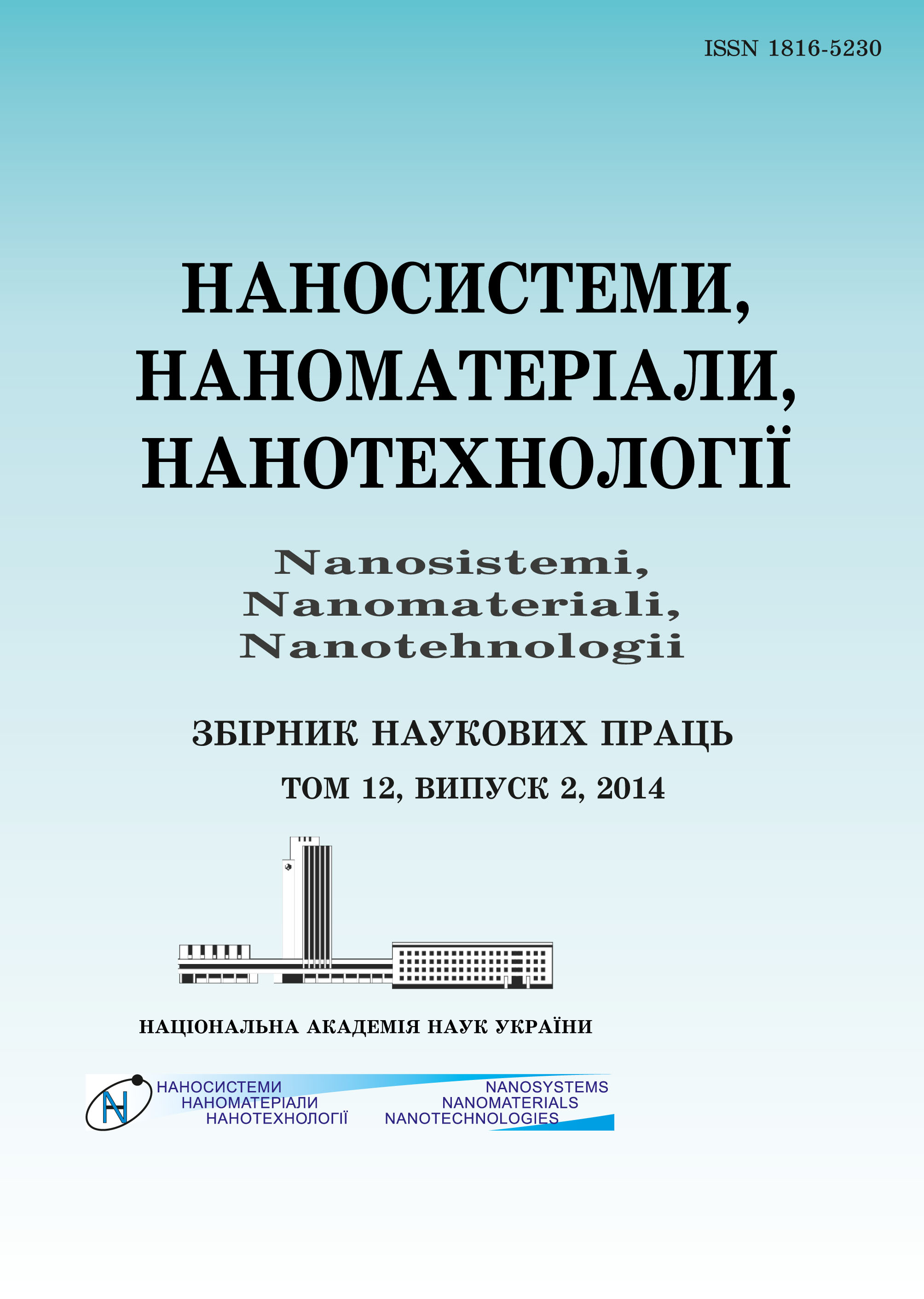|
|
|||||||||
 |
Year 2021 Volume 19, Issue 1 |
|
|||||||
|
|||||||||
Issues/2021/vol. 19 /Issue 1 |
A. R. Sadygova, I. I. Abbasov, E. S. Safiev, A. A. Hadiyeva, Kh. O. Sadig, V. A. Alekperov
«Molecular Processes in Electric Destruction of Nanocomposites Polyethylene + Nanoclay After Exposure to Electric Discharge and Orientation»
0103–0110 (2021)
PACS numbers: 77.22Gm, 78.30.Jw, 81.05.Qk, 81.07.Pr, 82.33.Xj, 82.35.Np, 83.80.Tc
It is studied the effect of electric discharge and orientation on the electric lifetime (τ) and dielectric strength (E) of the polyethylene (PE) + nanoclay (NC) nanocomposites. Changes in the structure of materials under the influence of external factors are determined by infrared spectrometry and compared with their electrical properties. After electric ageing, the rate of formation of carbonyl groups (C=O) in nanocomposites is comparatively lower than in PE. In destructive processes, NC is much more active than in stabilizing processes.
Keywords: nanocomposite, dielectric strength, lifetime, orientation, carbonyl group
https://doi.org/10.15407/nnn.19.01.103
References
1. Y. L. Ozcanl?, F. S. Boydag, V. A. Alekperov, I. Hikmet, and M. Canturk,Mod. Phys. Lett. B, 21, No. 21: 1415 (2007); https://doi.org/10.1142/S02179849070136632. A. Akinci, J. Reinf. Plast. Compos., 29, No. 7: 957 (2010); https://doi.org/10.1177/0731684408101426
3. M. A. Ramazanov, S. A. Abasov, R. L. Mamedova, and A. A. Resulova,Surf. Engin. Appl. Electrochem., 47, No. 6: 481 (2011); https://doi.org/10.3103/S1068375511060160
4. Y. Ozcanli, M. Beken, F. Kosovali Cavus, A. A. Hadiyeva, A. R. Sadigova,and V. A. Alekperov, J. Nanoelectron. Optoelectron., 12: No. 4: 316 (2017); https://doi.org/10.1166/jno.2017.2017
5. A. R. Sadygova, I. I. Abbasov, E. S. Safiev, P. B. Asilbeyli, andV. A. Alekperov, Nanosistemi, Nanomateriali, Nanotehnologii, 17, No. 1:155 (2019) (in Russian); https://doi.org/10.15407/nnn.17.01.155,https://www.imp.kiev.ua/nanosys/media/pdf/2019/1/nano_vol17_iss1_p0155p0165_2019.pdf
6. R. A. Vaia, H. Ishii, and E. P. Giannelis, Adv. Mater., 8: 29 (1996).
7. H. R. Dennis, D. L. Hunter, D. Chang, S. Kim, J. L. White, J. W. Cho,D. R. Paul, Polymer, 42, No. 23: 9513 (2001); https://doi.org/10.1016/S0032-3861(01)00473-6
8. F. S. Boydag, Y. L. Ozcanli, V. A. Alekperov, and I. Hikmet, Compos. PartB, 37, Nos. 2ľ3: 249 (2006); https://doi.org/10.1016/j.compositesb.2005.05.014
9. C. Yumusak and V. Alekberov, Fibers Polym., 9, No. 1: 15 (2008); https://doi.org/10.1007/s12221-008-0003-7
10. G. B. Abdullayev, S. A. Abasov, Ya. G. Ragimov, and V. A. Alekperov,Dokl. Akad. Nauk AzSSR, 44, No. 1: 56 (1983) (in Russian).
11. A. R. Sadygova, A. A. Khadiyeva, V. A. Alekperov, and M. A. Ramazanov,Azerb. J. Phys., 24, No. 4: 14 (2018) (in Azerbaijani).
12. Ehlektricheskie Svoistva Polimerov [Electrical Properties of Polymers] (Ed.B. Sazhina) (Leningrad: Khimiya: 1986) (in Russian).
13. A. M. Magerramov, Strukturnoye i Radiatsionnoye Modifitsirovanie Ehlek-tretnykh, Pĺiezoehlektricheskikh Svoistv Polimernykh Kompozitov [Structuraland Radiation Modification of Electret, Piezoelectric Properties of PolymerComposites] (Baku: Elm: 2001) (in Russian).
 This article is licensed under the Creative Commons Attribution-NoDerivatives 4.0 International License ©2003—2021 NANOSISTEMI, NANOMATERIALI, NANOTEHNOLOGII G. V. Kurdyumov Institute for Metal Physics of the National Academy of Sciences of Ukraine. E-mail: tatar@imp.kiev.ua Phones and address of the editorial office About the collection User agreement |